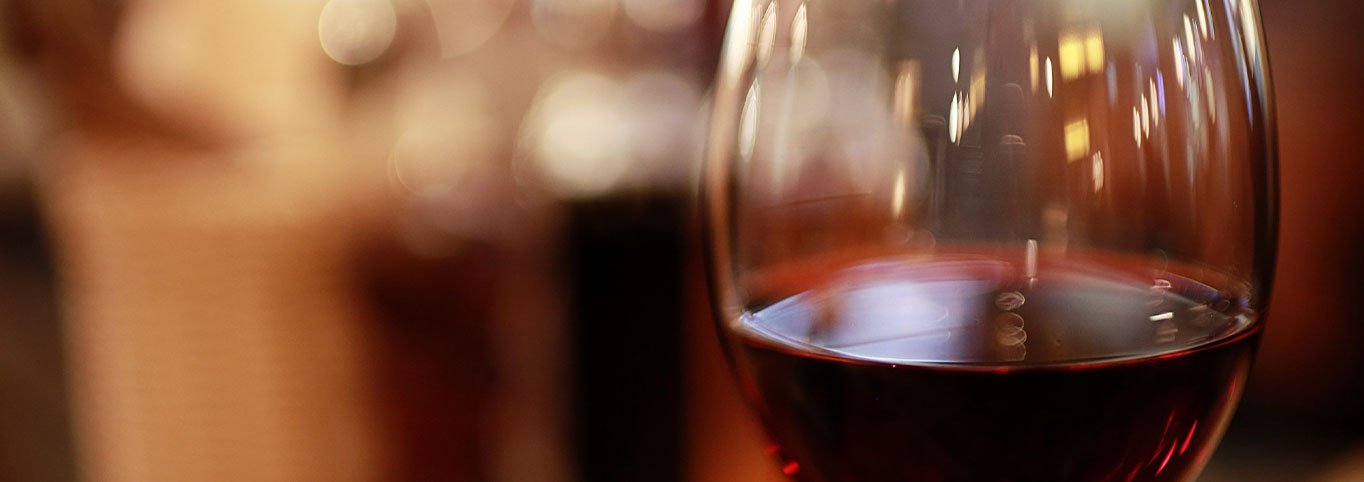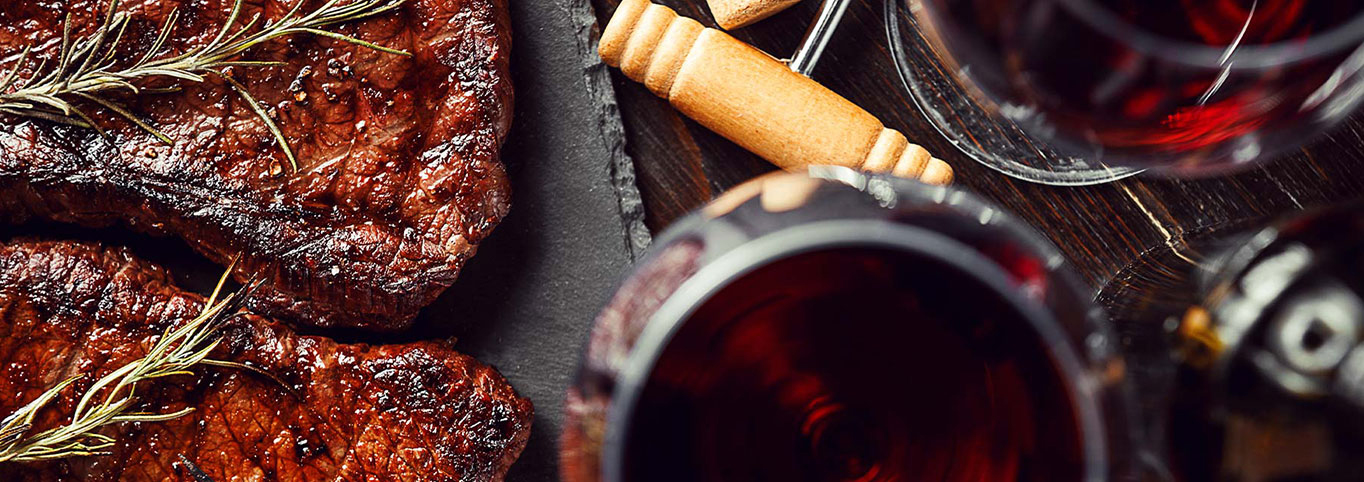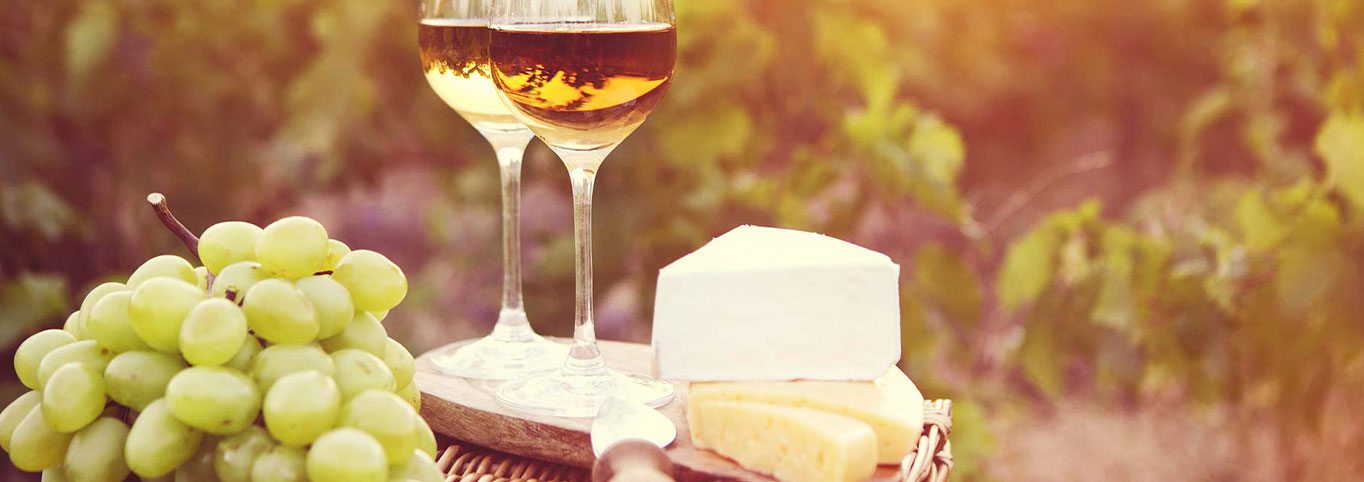RED WINES TYPES AND THE VARIOUS ASPECTS USED TO DEFINE THEM

For a gathering of many, a romantic meal for two, or a cozy night in with a good movie for one, nothing suits a moment of relaxation quite like a glass of red wine. But which of the many red wine types should you buy? With over 50 red grape varieties (and those are just the more popular ones), a vast array of winemaking styles, and an entire globe of wine-producing regions to choose from, there is so much more to consider than just color.
To help guide your choice, we’ve broken down the major red wine types by body, grape variety, geography, terroir, vintage and winemaking style. Take a moment to explore the world of red wine and learn how terroir, vintage and winemaking style come together to create a vast array of aromas, flavors and textures in the glass.
Red Wine Types by Body
The “body type” of a wine refers to a combination of its tannic structure, acidity, sugar and alcohol content, which results in the overall mouthfeel or “texture” of the wine. Generally speaking, light-bodied red wines red wines will show fewer tannins and higher acidity, a lower alcohol content, lighter color and more fresh red fruit flavors rather than ripe black fruit. Lighter bodied wines tend to go with a wider array of cuisines and cooking styles, which is why they are often recommended as food pairings, for the Thanksgiving meal for example. Examples of lighter bodied wines include Pinot Noir and Gamay from France, although the specific expression of a grape variety can vary significantly with region, vintage and winemaking style.
Medium-bodied red wines will have more tannins and “weight,” leaving a deeper impact on your palate overall. A Cabernet Franc from the Loire Valley, a Nebbiolo from Piedmont and Chianti wines are typical examples of medium-bodied wines. Don’t forget that a wine’s “body type” is somewhere on an infinite spectrum, with as many types as there are wines. So, “medium body” wines can further be broken down to “light to medium,” “medium” and “medium to full,” depending where they fit on the spectrum.
Full-bodied red wines are those that coat your tongue and palate, wines with a texture rich and thick enough to “chew.” These wines tend to be deeper in color, with very present tannins that will grip your palate and hold onto it for a while. Think of a classic Bordeaux blend of Cabernet Sauvignon and Merlot, an Italian Super Tuscan, a peppery Syrah from the Rhone Valley or a Malbec from Argentina. Because of their bold flavors and hearty texture, full-bodied wines pair best with food that is not too complex in flavor, but with enough fat and texture to stand up to the wine’s tannins. These wines typically go well with grilled or roasted meat dishes, game or fowl.
Red Wine Types by Grape Variety
The aromas and flavors of a red wine is, first and foremost, determined by the grape variety or blend of varieties used to produce it. This means that the red wine grape is often used to categorize types of red wine. The most commonly produced red wine types are made from the noble red grapes: Cabernet Sauvignon, Merlot, Pinot Noir, Grenache, Tempranillo, Sangiovese, Nebbiolo, Syrah and Malbec. These red wine varietals each have their signature tell-tale aromas, such as the blackcurrant of Cabernet Sauvignon grapes, the “rose petals and tar” of Nebbiolo grapes, the dark fruit of Merlot, or the fresh strawberry of Pinot Noir grapes. While these are some of the most planted red varieties on earth, there are many others worth discovering!
Red Wine Types by Geography and Terroir
Along with grape variety, geography and terroir also have a significant influence on the profile of a wine, which is why these can also be used to categorize red wine types. The most basic such distinction is that between New World wines (which are generalized as being riper, more full-bodied and fruit-forward) and Old World wines (lighter-bodied and more nuanced, with earthy, mineral, floral and herbaceous qualities). Then, we can also group red wine types by region: Bordeaux, Burgundy, Tuscany, Piedmont, Napa Valley, the Maipo Valley of Chile, Mendoza in Argentina, south Australia, just to name a few examples. We can further break this down into appellations, such as the famous Pauillac, Margaux, Pomerol and Saint-Emilion appellations of Bordeaux.
We can even further categorize red wines by the designation level of their appellations of origin, such as the Grands Crus Classés (Classified Growths of Bordeaux). These are all geographical categorizations.
Perhaps a more accurate way to categorize red wine types, however, is by terroir. One way to do so is to distinguish cool climate wines (wines from cooler climates generally have a higher acidity, lower alcohol, lighter color and overall lighter body) from warm climate wines (with riper tannins, higher alcohol, deeper color and fuller body). Based on where it is grown, grape varieties can express very different flavor profiles. Think, for example, of the vast difference between an herbal, savory, tannic Cabernet Sauvignon from cool climate Bordeaux and the ripe, black-fruit-forward, softer Cabernet Sauvignon from warm climate Napa Valley in California.
Still other ways of categorizing red wine types according to terroir is by the elevation of the vineyard, with high-altitude wines characterized by a certain freshness and a concentration of aromas. Soil type, slope and sun exposure also help determine the style of a wine.
Red Wines Types by Vintage
When we speak of vintage, what we’re referring to is the climate characterizing the growing season of the year in which a wine was made. Climatic conditions can significantly affect the resulting style of a red wine, which is why it can also be used to categorize red wine types. So, we can speak of solar vintage wines (with lots of sunshine generally leading to riper aromas and more alcohol, though resulting in “flabby” wines in some grape varieties) and cooler vintage wines (which can mean astringent tannins, but also a fresher acidity, depending on grape variety).
Red Wines Types by Winemaking
And finally, what happens at the winery, as decided by the winemaker, also has a significant effect on a red wine’s style. Red wines are red because of a process called maceration, during which coloring agents known as anthocyanins, as well as tannins and flavor compounds are leached from the grape skin into the must. By adjusting the length of the maceration process, the winemaker can control the depth of color, tannins and concentration of flavors in the resulting wine. So, maceration has a lot to do with the “body type” of a wine. The winemaker can also play with fermentation to produce wines that are sweet, off-dry or dry.
The most common ways to categorize red wines by winemaking style is to consider how a wine was aged, for how long, and in which type of vessel. Common examples of these red wine types include barrel-aged or oaky red wines (which may have smooth tannins, ripe red fruit aromas and signature nutty, smoky and spicy nuances from the oak) and cement-aged red wines (which often have brighter fruity aromas and a flavor profile driven by grape variety and terroir).
The way you choose to describe different red wine types depends largely on personal taste. However, perhaps the most accurate way for a wine drinker to describe what’s in the glass should involve several of these category types, at best. So, “a light-bodied, cool climate Oregon Pinot Noir” or “an oaky, full-bodied Cabernet and Merlot blend from the Pauillac appellation of Bordeaux.”


